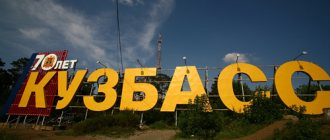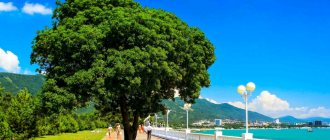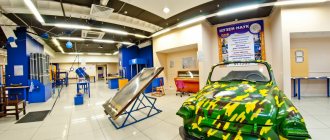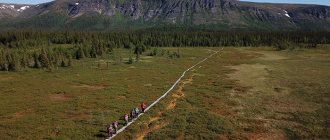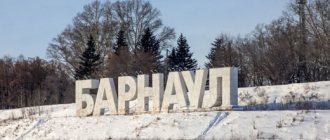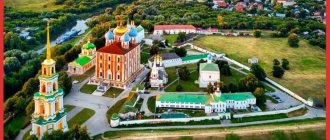1236 km from the capital on the banks of the Northern Dvina not far from the White Sea there is a city with the title of the city of military glory Arkhangelsk . It was founded by decree of Ivan the Terrible. The year of foundation of Arkhangelsk is officially recognized as 1584, but the first Slavic settlements in these places appeared in the 12th century.
A year after its founding, Arkhangelsk became a major center of trade relations. At the time when fairs were held here, even in the capital there was a decline in trade. In the 16th and 17th centuries, wooden buildings predominated in Arkhangelsk, and therefore the city quite often suffered from fires.
In 1693, construction of a shipyard began on Solombala Island, and in 1694, in the presence of Peter I, the first ship was launched. In 1702, a victorious battle took place with a Swedish squadron, and Arkhangelsk was named the victorious city.
It is noteworthy that after the victory over the Swedes, Peter decided to limit trade through Arkhangelsk. He did this in order to give St. Petersburg the status of the country's main commercial and military port. The restrictions were in effect until 1762, when Catherine II lifted them and thereby brought life back to the city. However, the status of the main port remained with St. Petersburg.
In the 19th century, Arkhangelsk became a scientific center, because it was here that numerous expeditions to explore the Arctic began. The task of developing the northern territories of our country is still relevant today
Arkhangelsk has its own anthem and its own coat of arms. The city's coat of arms depicts Archangel Michael with a shield and sword, who overthrows the devil.
Climate of Arkhangelsk
Part of the territory of the Arkhangelsk region belongs to the Far North zone, while the rest of this territory is equated to this zone. The climate in Arkhangelsk is moderate, directly influenced by the northern seas, air masses from the Atlantic Ocean and a small amount of sunlight and heat. It is characterized by short and rather cold summers and long, moderately frosty winters. The average annual temperature is +1.3 degrees, the average temperature of the coldest month (January) is -13.8 degrees, and the average temperature of the warmest month (July) is +16.3 degrees.
The weather in Arkhangelsk is unstable and can change several times a day. There are many more rainy days a year than sunny days. About 607 mm of precipitation falls annually.
It is noteworthy that under the influence of Siberian air, the air temperature in winter can drop to -30 degrees, and under the influence of hot air that penetrates the region from the Kazakh steppes, in the summer the temperature rises above +30 degrees, but despite this, in the summer Frosts are common. The absolute temperature maximum was recorded in Arkhangelsk on July 13, 1972 and amounted to +34.4 degrees, and the temperature minimum was recorded on January 8, 1885 and amounted to -45.2 degrees.
Geography
Climate
Arkhangelsk experiences a subarctic climate (Köppen climate classification DFC
) with long (November–March) and very cold winters and short (June–August) cool summers. Arkhangelsk is the largest city in the world with a subarctic climate. Much of western Calgary in Canada experiences a subarctic climate and has a much larger population, but not the entire city has a subarctic climate, so that doesn't count. Krasnoyarsk in Siberia also has a borderline subarctic climate with the suburbs and northern parts of the city experiencing a subarctic climate and having a population of over 1 million, but the entire city does not experience a subarctic climate so that doesn't count either.
| Climate data for Arkhangelsk | |||||||||||||
| Month | Jan | Feb | Mar | Apr | May | Jun | Jul | Aug | Sep | October | But I | December | Year |
| Record high °C (°F) | 5.0 (41.0) | 5.2 (41.4) | 12.1 (53.8) | 25.3 (77.5) | 31.7 (89.1) | 33.0 (91.4) | 34.4 (93.9) | 33.4 (92.1) | 27.7 (81.9) | 18.3 (64.9) | 10.0 (50.0) | 5.8 (42.4) | 34.4 (93.9) |
| Average high °C (°F) | −9.2 (15.4) | −7.7 (18.1) | −1.2 (29.8) | 5.4 (41.7) | 12.5 (54.5) | 18.7 (65.7) | 21.8 (71.2) | 18.0 (64.4) | 12.2 (54.0) | 4.8 (40.6) | −2.5 (27.5) | −6.4 (20.5) | 5.5 (41.9) |
| Daily average °C (°F) | −12.7 (9.1) | −11.4 (11.5) | −5.5 (22.1) | 0.4 (32.7) | 6.9 (44.4) | 13.0 (55.4) | 16.3 (61.3) | 13.1 (55.6) | 8.2 (46.8) | 2.3 (36.1) | −5.1 (22.8) | −9.8 (14.4) | 1.3 (34.3) |
| Average low °C (°F) | −16.5 (2.3) | −15.2 (4.6) | −9.4 (15.1) | −3.9 (25.0) | 2.2 (36.0) | 7.7 (45.9) | 11.3 (52.3) | 8.9 (48.0) | 5.1 (41.2) | 0.1 (32.2) | −7.7 (18.1) | −13.4 (7.9) | −2.6 (27.3) |
| Record low °C (°F) | −45.2 (−49.4) | −41.2 (−42.2) | −37.1 (−34.8) | −27.3 (−17.1) | −13.7 (7.3) | −3.9 (25.0) | −0.5 (31.1) | −4.1 (24.6) | −7.5 (18.5) | −21.1 (−6.0) | −36.5 (−33.7) | −43.2 (−45.8) | −45.2 (−49.4) |
| Average precipitation mm (inches) | 38 (1.5) | 29 (1.1) | 30 (1.2) | 30 (1.2) | 49 (1.9) | 61 (2.4) | 73 (2.9) | 70 (2.8) | 61 (2.4) | 66 (2.6) | 53 (2.1) | 46 (1.8) | 606 (23.9) |
| Average snowfall, cm (inches) | 36 (14) | 45 (18) | 48 (19) | 19 (7.5) | 1 (0.4) | 0.1 (0.0) | 0 (0) | track | 1 (0.4) | 2 (0.8) | 11 (4.3) | 24 (9.4) | 187.1 (73.8) |
| Average rainy days | 2 | 2 | 4 | 10 | 17 | 17 | 18 | 19 | 22 | 19 | 9 | 4 | 143 |
| Average snow days | 27 | 26 | 23 | 13 | 6 | 1 | 0 | 0.03 | 1 | 13 | 25 | 28 | 163 |
| Average relative humidity (%) | 85 | 84 | 80 | 72 | 68 | 69 | 75 | 81 | 85 | 88 | 89 | 87 | 80 |
| Average monthly sunshine | 13 | 56 | 117 | 193 | 262 | 298 | 301 | 203 | 116 | 59 | 19 | 6 | 1,643 |
| Source 1: Pogoda.ru.net[36] | |||||||||||||
| Source 2: NOAA (Sun, 1961–1990).[37] | |||||||||||||
Ecology
The environmental situation in Arkhangelsk cannot be called favorable. The Plesetsk cosmodrome has a significant negative impact, and in the Mezensky, Kholmogorsky, Pinezhsky and Leshukonsky regions, launch vehicle stages are being completely reset.
However, pollution from comic objects is far from the only one. The region has well-developed industrial production, which pollutes the air with its emissions. Moreover, the level of air pollution is considered high, since the atmosphere contains substances such as benzopyrene, formaldehyde, methyl mercaptan, hydrogen sulfide, nitrogen and sulfur dioxides and others. An important factor in air pollution is automobile public and personal transport of citizens, the number of which is growing more and more every year.
The Northern Dvina basin is subject to regular pollution from the pulp and paper mills (Arkhangelsk, Kotlas, Solombalsky). Compounds of heavy metals and, in some places, phenols and petroleum products enter the water.
The White Sea coast is regularly polluted by discharges from industrial enterprises (Zvezdochka, Sevmash, thermal power plant).
The problem of storing and neutralizing industrial and household waste is especially acute in the region. Regional authorities admit that most of the existing landfills do not meet modern environmental safety standards. The number of unauthorized landfills increases every year, which leads to soil, air and groundwater pollution.
In turn, local governments, in order to solve environmental problems, develop and implement programs to prevent further pollution and restore already contaminated sites.
Old name and history of the city
The name was officially adopted in 1613 after the name of the St. Michael the Archangel Monastery, not far from which the city was built.
In the first decades of the existence of Arkhangelsk, it was tentatively called New Kholmogory, New Kholmogory City, New City after the name of the settlement on the site of which it was built.
Michael the Archangel Monastery was founded in the 12th century on Cape Pur-Navolok. Since 1553, after the arrival of the British traveler Richard Chancellor in this area, the rapid development of trade with the Dutch and English began. In 1583, the threat of an attack from Sweden loomed over the country. Tsar Ivan the Terrible ordered the construction of a fortress on the cape around the monastery, which was named Novokholmogory. A pier for ships was built nearby.
Population of Arkhangelsk
Arkhangelsk ranks 50th in our country in terms of the number of people living in the region. According to the latest data, the city has a population of 348,343, with 5% more women than men.
The dynamics of population changes cannot be called stable. So, if before the Second World War there was a population increase, then during the war the number of inhabitants decreased significantly. From the late 50s until the 90s of the last century, there was a significant increase in the number of city residents from 256 thousand to 416 thousand people. Since the beginning of the 90s, there has been a downward trend in the number of Arkhangelsk residents, with interruptions in 2008 and 2010.
As for age groups, it should be noted that the majority of the region’s population are people of the middle and older age groups; every eighth resident of the region is over 65 years of age. Due to the fact that the birth rate is steadily declining, the proportion of elderly people is increasing every year.
A slight increase in the population in the region in some years is observed not due to natural growth, but due to the migration of villagers who go to Arkhangelsk to study and in search of a better life, as well as thanks to visitors from the countries of the former USSR.
Education
The monument to Peter the Great, a sailing ship, and the sea terminal in Arkhangelsk are depicted on the 500 ruble banknote [25]
Arkhangelsk was home to the Pomeranian State University and the Arkhangelsk State Technical University which merged with several other higher education institutions in 2010 to form the Northern (Arctic) ) Federal University.
Arkhangelsk is also home to the Northern State Medical University, the Makarov State Maritime Academy and a branch of the All-Russian Correspondence Institute of Finance and Economics.
Famous people
The Arkhangelsk region has become the homeland for many talented people and politicians. In particular, researcher M.A. was born here. Lavrov, Major General V.L. Abramov, Major General A.M. Ilyin, architect A.I. von Gauguin, shipbuilder, scientist N.I. Kuteynikov, explorer E.P. Khabarov, sculptor F.I. Shubin and others.
The life of Patriarch Nikon, who took monastic vows at the Solovetsky Monastery, and the ataman and leader of the uprising S.T. is inextricably linked with the Arkhangelsk region. Razin, who in 1652 visited the Solovetsky Monastery for pilgrimage purposes and, of course, M.V. Lomonosov - scientist, historian, artist, who was born and lived in the Arkhangelsk province.
In the Arkhangelsk region, people who are associated with the navy of our country lived and worked, including A.A. Petrovich - physicist, academician, founder of Russian nuclear energy; S.N. Kovalev – academician, inventor, designer; D.F. Ustinov - Minister of the USSR, People's Commissar.
The region was glorified by such figures as:
- N.N. Priorov - academician;
- N.P. Laverov – academician, Arctic researcher;
- I.V. Meshchersky - scientist, physicist;
- T.A. Gaidar – writer and journalist;
- F.E. Shishigin – artist, director;
- V.V. Alentova - actress, people's artist;
- F. Abramov - Soviet writer and many others.
How to get there and get directions from the two capitals?
You can get there from Moscow and St. Petersburg by your own car. There are also daily direct flights from the two capitals to Talagi airport and a railway connection has been established.
For more information on how to get to Arkhangelsk and the travel route from Moscow, see here, from St. Petersburg - here.
Economy of the city of Arkhangelsk
Currently, there are about 7.7 thousand enterprises operating in Arkhangelsk, and 2.2 thousand of them can be classified as medium and large. The leading role in the economy of the region belongs to the forestry and wood processing industries. Thus, about 40% of the total volume of industrial production falls on products produced by enterprises in this industry. Arkhangelsk supplies pulp, lumber, cardboard, and paper to other regions of Russia.
In addition, Arkhangelsk is one of the largest suppliers of fish to the country’s domestic market.
Transport hubs play an important role in the economy of the region, since it is in Arkhangelsk that large highways and railways connect, and cargo ports operate in the city. The M8 highway passes through Arkhangelsk, along which timber, wood products and fish are transported to the central part of the country.
Kinds of sports
Vodnik's home stadium "Trud", the arena of the final of the 2011–2012 season.
Women in wedding dresses celebrate the 450th anniversary of the founding of Arkhangelsk. Arkhangelsk's tallest building Bandy is the largest sport in the city and is considered the national sport in Russia.[38]Vodnik, a local team, has been Russian champion nine times (1996–2000 and 2002–2005). Their home arena seats 10,000 people.[39] Arkhangelsk hosted the World Bandy Championships in 1999 and 2003.[40] Season 2011–2012 The Russian Bandy League Final was held here on March 25, 2012.[41][42] 2016 World Youth Bandy Championship-17 Played in Arkhangelsk from January 28 to 31.[43]
Investments
Favorable geographical location, developed transport network, natural potential, highly qualified personnel, support of local authorities have determined the investment attractiveness of the Arkhangelsk region.
The Arkhangelsk region is called the sea gate of the north of Russia, since the region has access to the sea, and the Arkhangelsk multi-functional port operates all year round and can handle a cargo traffic of about 4.5 million tons.
One of the promising industries in the region is the shipbuilding industry. Shipbuilding enterprises not only fulfill government orders, but also produce civil vessels, as well as equipment for oil production, transportation and refining.
The investment attractiveness of the region was determined by the presence of mineral deposits on its territory, in particular diamonds, oil, gas, zinc, lead, bauxite and gypsum.
The timber industry is also promising. Arkhangelsk forests are considered one of the best in the whole world, since the wood is distinguished not only by its mechanical properties, but also by its environmental cleanliness. It is not surprising that several large pulp and paper mills operate successfully in the region.
A number of investment projects aimed at forest development are currently being implemented in the region. In particular, the authorities provide forest areas for use without competitions and with a 50% discount on rental payments.
To increase the investment attractiveness of the region, local authorities provide investors with tax incentives and also provide them with comprehensive support.
Russian North: borders, history and architecture of the region
The Russian North occupies vast areas in the north of the European part of the country. From the west it is limited by the Sheksna River basin, from the east by Pinega and Vychegda. In the north, the region is washed by the waters of the White and Barents Seas. In the south, the border of the Russian North is conventionally drawn through Vologda. The modern Arkhangelsk region occupies most of this historical and cultural region.
Due to its geographical location, the Russian North is a harsh, sparsely populated and cold region. However, it is not without natural beauty and charm. White nights are considered a unique symbol of the Arctic region - an unusual phenomenon observed in the summer months of the year (June-July). These days, the sun barely hides behind the horizon, turning the dark time of day into just twilight. This phenomenon was perfectly described by Alexander Pushkin in one of his poems: “One dawn is in a hurry to replace another, giving the night half an hour.”
The climatic conditions of the Russian North are unsuitable for traditional agriculture. However, nature has endowed this region with other riches, in particular fish and furs. Since ancient times, strong, energetic and, to some extent, adventurous individuals flocked here, who were not afraid of the local difficulties and dangers. This is how a unique and proud ethnic group was formed that did not experience the hardships of serfdom - the Pomors.
The architecture of the Russian North is no less unique. During the 16th-17th centuries, Old Believers actively moved here, establishing their own communities in the region. Uniquely beautiful examples of sacred architecture have been preserved in Solvychegodsk, Kotlas, and Veliky Ustyug. The famous Russian artist Nicholas Roerich was delighted with the natural and architectural originality of this region.
Enterprises
The forestry industry of Arkhangelsk is represented by the Solombales holding with its parent enterprise Solombalsky Pulp and Paper Mill (production of unbleached pulp) and the largest lumber production enterprise Solombalsky LDK.
The region's mining industry is represented by:
- Severalmaz – diamond mining and cutting;
- Arkhangelskgeoldobycha – oil and gas production;
- Aurora – oil production.
In the field of mechanical engineering, the Solombala Machine-Building Plant operates, which specializes in the production of equipment for logging.
The food industry is represented by:
- ALVIZ – production of alcoholic beverages;
- "Titanium";
- "Moloko" - a milk production plant;
- The trawl fleet is a fish catching enterprise.
In the energy sector, there are thermal power plants and Arkhenergo, which sell thermal and electrical energy.
When did Peter I make his first trip?
On July 30, 1693, Peter I visited the city for the first time and spent more than two months there. As a result, the first state shipyard was founded in Solombala and shipbuilding on a national scale began.
In 1702, under his leadership, the Novodvinsk fortress was built.
Since 1713, trade through Arkhangelsk was significantly reduced and moved to the port of St. Petersburg, a minimum of goods for the livelihoods of the population was imported, but the city was still the capital of a vast territory from the Kola Peninsula to the Ural Mountains. By the beginning of the 20th century, a large center of the timber industry had formed here.
Construction
Arkhangelsk was built of wood and remained wooden for a long time, which is why it often suffered from fires. The city burned, recovered and burned again.
The peak of housing construction in the city occurred in the early 60s of the last century, which is associated with an increase in allocations for the construction of residential buildings. But, despite the fact that 187 thousand square meters of area were put into operation in 1961, the problem of housing shortage was acutely felt in the city. After a visit to Arkhangelsk N.S. Khrushchev, standard microdistricts began to be built in the city in order to solve the housing problem. Then Lenin Square and Engels Street were built, which is now the main street of Arkhangelsk.
Half a century has passed since the 60s, and the housing problem is still unresolved. Currently, the city authorities are faced with the task of reconstructing the old housing stock, as well as building new ones to resettle citizens from dilapidated and dilapidated housing. The couple came to demolish those standard panel houses that were built during the reign of Khrushchev, because over the 50 years that have passed since their construction, they have already exhausted their resource, we must not forget that they were built primarily as temporary housing.
Story
History of the early centuries
The Vikings knew the area around Arkhangelsk as Bjarmaland. Okhter from Halogaland told about 890 about his travels through the area near the river and the White Sea with many buildings. This was probably the place later known as Arkhangelsk.[ citation needed
] According to Snorri Sturluson, Vikings led by Thorir Hund raided this area in 1027.
In 1989, at the mouth of the Dvina, in close proximity to present-day Arkhangelsk, local collective farmers found an unusually impressive silver treasure.[17] It was probably buried in the early 12th century and contained items that could have been up to two hundred years old at the time.
Most of the finds contained 1.6 kg of silver, mostly in the form of coins. Jewelry and jewelery products come from Russia or neighboring regions. Most of the coins were German, but the hoard also contained smaller numbers of Kufan, English, Bohemian, Hungarian, Danish, Swedish and Norwegian coins.
It is difficult to put this find together historically until further research is completed. There are at least two possible interpretations. This may be a treasure belonging to a society described in Scandinavian sources. In general, such finds, whether from Scandinavia, the Baltic region, or Russia, are closely associated with stable agricultural societies with significant trading activity.
Alternatively, like Russian scientists [ who?
] who published the find in 1992, it can be seen as evidence of a stronger case of Russian colonization than previously thought.
Novgorodians are coming
In the 12th century, Novgorodians founded the monastery of the Archangel Michael (named in honor of Michael the Archangel) at the mouth of the river. Northern Dvina.
The main trading center of the region at that time was Kholmogory, located 75 km (47 mi) southeast of Arkhangelsk, up the Dvina River, about 10 km (6.2 mi) downstream from where the Pinega River flows into the Dvina. Written sources indicate that Kholmogory existed at the beginning of the 12th century, but there are no archaeological materials covering the early history of the city. It is unknown whether this settlement was of Russian origin or whether it dates back to pre-Russian times. In the center of the small town (or Gorodok) that is there today, there is a large mound of building remains and river sand, but it has not been archaeologically excavated.
Norwegian-Russian conflict
Arkhangelsk's location in northwestern Russia
The Arkhangelsk region played an important role in the rivalry of Norwegian and Russian interests in the northern regions. From Novgorod, Russia's range of interests expanded far north to the Kola Peninsula in the 12th century. However, here Norway introduced taxes and rights to the fur trade. The compromise agreement reached in 1251 was soon broken.[ clarification needed
][
need a quote
]
In 1411, Yakov Stepanovich from Novgorod went on the attack. Northern Norway. This was the beginning of a series of clashes. In 1419, Norwegian ships with five hundred soldiers entered the White Sea. "Murmaners", as the Norwegians were called (cf. Murmansk), plundered many Russian settlements on the coast, including the Archangel St. Michael's Monastery.[18]
Novgorod managed to push back the Norwegians. However, in 1478 the territory was captured by Ivan III and passed into the Grand Duchy of Moscow with the rest of the Novgorod Republic.
Trade with England, Scotland and the Netherlands
Three English ships set out to search for the Northeast Passage to China in 1553; two went missing, one ended up in the White Sea and eventually crossed the Arkhangelsk area. Ivan the Terrible learned of this and entered into a trade agreement with the ship's captain, Richard Chancellor. Trading privileges were granted to English merchants in 1555, leading to the founding of the Company of Merchant Adventurers, which began sending ships annually to the mouth of the Northern Dvina. Dutch merchants also began bringing their ships to the White Sea from the 1560s. Scottish and English merchants also traded in the 16th century; however, by the 17th century the White Sea area was mainly visited by the Dutch.
Founding and further development
Plan of the Novaya Dvina fort in Arkhangelsk
In 1584, Ivan ordered the founding of New Kholmogory
(which would later be renamed the neighboring Arkhangelsko-Mikhailovsky Monastery). At that time, access to the Baltic Sea was still largely controlled by Sweden. Thus, although Arkhangelsk was ice-bound in winter, it remained almost Moscow's only link to maritime trade. Local residents, called Pomors, were the first to explore trade routes to Northern Siberia as far as the trans-Ural city of Mangazeya and beyond. In December 1613, during the Time of Troubles, Arkhangelsk was besieged by Polish-Lithuanian marauders under the command of Stanislav Yasinsky (Lisowczyca), who failed to take the fortified city. Fires broke out in 1619 and 1637 and the entire city burned down.
In 1693, Peter the Great ordered the creation of a state shipyard in Arkhangelsk. A year later ships Holy Prophecy
(Holy Prophecy),
Apostol Pavel
(Apostle Paul) and the yacht
Svyatoy Petr
(Saint Peter) sailed in the White Sea.
However, he also realized that Arkhangelsk would always be limited as a port due to five months of ice cover, and after a successful campaign against the Swedish armies in the Baltic, he founded St. Petersburg in May 1703. However, Arkhangelsk continued to be an important naval base and maritime center in northern Russia.[19] Icon of the Archangel Michael, shown as the protector of Arkhangelsk.
In 1722, Peter the Great decreed that Arkhangelsk should no longer accept goods in excess of those sufficient for the city (for so-called internal consumption). This happened due to the will of the Tsar to transfer all international maritime trade to St. Petersburg. This factor largely contributed to the deterioration of the condition of Arkhangelsk, which continued until 1762, when this decree was repealed.
Arkhangelsk declined in the 18th century as Baltic trade became increasingly important. In the early 19th century, the arrest and prolonged detention by Russian authorities of John Bellingham, an English export representative based in Arkhangelsk, was an indirect cause of Bellingham's assassination by later British Prime Minister Spencer Perceval.
The economy of Arkhangelsk was revived at the end of the 19th century, when the railway to Moscow was built and timber became the main export product. The city resisted Bolshevik rule from 1918 to 1920 and was a stronghold of the anti-Bolshevik White Army supported by the military intervention of British-led Entente forces along the Allied Expedition, including a contingent from North America known as the Polar Bear Expedition.[20] This was also the scene of the Mudyug concentration camp.
During both world wars, Arkhangelsk was a major port where allied assistance was provided. During World War II, the city became known in the West as one of the two main destinations (along with Murmansk) for Arctic convoys to bring supplies to help the Soviet Union. During Operation Barbarossa, during the German invasion of the Soviet Union in 1941, Arkhangelsk was one of two cities (the other being Astrakhan) chosen to mark the intended eastern limit of Nazi control. This military operation was supposed to stop at this Line A-A but never reached it, as German forces were unable to capture either of the two cities, and also failed to capture Moscow.
Arkhangelsk was also the site of the Arkhangelsk ITL, or Arkhangelsk Labor Camp, in the 1930s and 1940s.
Today Arkhangelsk remains a major seaport, now open all year round thanks to improvements in icebreakers. The city is primarily a center for the timber and fishing industries.
On March 16, 2004, there was an explosion in an apartment building in the city.
Cost of housing in Arkhangelsk
The cost of housing in Arkhangelsk, as elsewhere, depends on many factors. The main ones include: city district, number of floors, construction material, type of heating, type of market (primary or secondary housing market).
According to the latest data, the cost of a square meter of housing on the primary market ranges from 21 to 80 thousand rubles per square meter. Let's consider the dependence of the cost of housing on the number of rooms by region.
On the primary market, an apartment in the following areas will cost more:
- A one-room apartment in the Northern region costs 3.4 million rubles;
- Two-room apartment in the same area - 3.9 million rubles;
- A three-room apartment in the same area ranges from 5.8 – 6.1 million rubles;
- The most expensive four-room apartment is located in the Economy area. Its price is 9,489,498 rubles.
By analogy, let’s present a list of the most affordable housing:
- A one-room apartment in the Oktyabrsky district costs 2.3 million rubles;
- Two-room apartment in the Mayskaya Gorka area - 3.02 million rubles;
- A three-room apartment in the same area ranges from 3.2 - 3.5 million rubles;
- The most expensive 4-room apartment is located in the Mayskaya Gorka area. Its price is 4,411,395 rubles.
Thus, the average cost of a square meter by region is distributed as follows (districts are presented in alphabetical order):
- Varavino-Faktoriya - 53.7 thousand rubles per m2;
- Isakogorsky - 21.9 thousand rubles per m2;
- Lomonosovsky - 64.4 thousand rubles per m2;
- Maimaksansky - 29.9 thousand rubles per m2;
- Mayskaya Gorka - 54.3 thousand rubles per m2;
- Oktyabrsky - 62.3 thousand rubles per m2;
- Primorsky - 25.05 thousand rubles per m2;
- Northern - 76.9 thousand rubles per m2;
- Solombalsky - 52.3 thousand rubles per m2;
- Tsiglomensky -35.7 thousand rubles per m2;
- Savings -73.1 thousand rubles per m2;
Content
- 1 Coat of arms
- 2 History 2.1 History of the early centuries
- 2.2 Novgorodians are coming
- 2.3 Norwegian-Russian conflict
- 2.4 Trade with England, Scotland and the Netherlands
- 2.5 Founding and further development
- 3.1 City divisions
- 6.1 Literature
- 7.1 Climate
- 11.1 Notes
Districts of Arkhangelsk
The city of Arkhangelsk consists of nine districts:
- Lomonosovsky - considered central, new comfortable housing is being built here, administrative buildings are also located here;
- Oktyabrsky - is considered central, as in Lomonosovsky there are administrative buildings, large shopping centers, and new residential buildings border on dilapidated housing stock;
- Isakogorsky is the outskirts of Arkhangelsk, which is considered undeveloped and dysfunctional; dilapidated wooden houses predominate here;
- Solombala - located on the island of the same name, several city-forming enterprises operate here, and the housing stock is mainly represented by panel high-rise buildings built during the Soviet period;
- Tsiglomensky is the outskirts of Arkhangelsk, considered unfavorable, the buildings here are dilapidated, wooden;
- The northern one is a working outskirts, industrial enterprises are located here, and the housing stock is represented by dilapidated wooden houses with partial amenities;
- Maimaksansky - the outskirts of the city with factories and dilapidated wooden housing;
- Varavino-Faktoriya is an area in which there are industrial enterprises, panel high-rise buildings and dilapidated wooden houses;
- Mayskaya Gorka is a residential area of the city.
The main attraction of the Russian North
250 kilometers northwest of Arkhangelsk are Solovki, an archipelago of six islands covered with forests, lakes and swamps. The main attraction of this archipelago and the entire Russian North is the Solovetsky Monastery.
Back in 1429, the first worship cross was installed on Solovki. A little later, two monks - Herman and Zosima - founded an Orthodox monastery here. At the very beginning, it consisted of just a few nondescript wooden buildings. But by the middle of the 16th century, the Solovetsky Monastery became the spiritual center of the entire Russian North.
For more than two centuries, the monastery also played the role of a prison in which opponents of the tsarist regime languished, and then enemies of Stalin. Many outstanding personalities passed through it: for example, comrades of the rebel Stepan Razin, the last ataman of the Zaporozhye Sich, Pyotr Kalnyshevsky.
Today the Solovetsky Monastery hosts travelers and tourists. By the way, this landmark can also be seen on the 500-ruble banknote.
Sights of the city of Arkhangelsk
Arkhangelsk is called the city of melancholy, cod and boards. You can only answer the question whether this is fair or not if you have been here yourself. Arkhangelsk is the cultural center of Pomorie.
Perhaps the most beautiful place in the city can be called the Northern Dvina embankment, walking along which you can see many interesting sculptural and architectural monuments.
Museum lovers should check out the Northern Maritime Museum, a local history, literary and fine arts museum.
It is worth taking a walk along the central pedestrian street of the city – Chumbarova-Luchinsky Avenue. Ancient wooden buildings are collected here, and the Treskoed restaurant-museum is also located here.
In the Solombala district there is the Santa Claus Village, which welcomes guests not only in winter, but also in summer.
There are theaters and exhibition halls and numerous clubs and discos in Arkhangelsk, and, therefore, everyone will have something to do in this amazing northern city. But the most remarkable place of Malye Korely is one of the most famous open-air museums in the Arkhangelsk region. The territory, covering an area of 140 hectares, is home to vibrant examples of folk art and wooden architecture. This amazing exhibition of northern Russia began to take shape in 1968. Five years later, on the banks of the Northern Dvina River, the museum itself appeared - a pearl of cultural heritage and a quiet place for walks away from the bustle of the city.
References
Notes
- ^ a b
State Committee of the Russian Federation on Statistics.
Committee of the Russian Federation for Standardization, Metrology and Certification. No. OK 019-95 January 1, 1997 “All-Russian classifier of objects of administrative-territorial division. Code 11 401”, Ed. changes No. 278 / 2015 dated January 1, 2016. (State Committee of the Russian Federation on Statistics. Committee of the Russian Federation on Standardization, Metrology and Certification. No. OK 019-95 January 1, 1997 Russian Classification of Administrative Objects (OKATO). Code 11 401
As amended by Amendment No. 278/2015 dated January 1, 2016). - Encyclopedia of Russian Cities
. Moscow: Great Russian Encyclopedia. 2003. p. 25. ISBN 5-7107-7399-9. - ^ a b
Information about the mayor of the city (in Russian). Arkhangelsk City Hall. Retrieved May 31, 2012. - City passport (in Russian). Arkhangelsk City Hall. Retrieved May 31, 2012.
- ^ a b
Federal State Statistics Service of Russia (2011).
“All-Russian Population Census 2010. Volume 1" [All-Russian Population Census 2010, vol. 1]. All-Russian Population Census 2010 [All-Russian Population Census 2010]
(in Russian). Federal State Statistics Service. - "26. The size of the permanent population of the Russian Federation by municipalities as of January 1, 2022.” Federal State Statistics Service. Retrieved January 23, 2022.
- ^ a b c d f
Regional Law No. 65-5-OZ - ^ a b c d
Regional Law No. 258-extra-OZ - "On the calculation of time." Official Internet portal of legal information
(in Russian). June 3, 2011. Retrieved January 19, 2022. - “List of postal codes” (in Russian). Post office. Archived from the original on December 12, 2006. Retrieved July 23, 2011.
- Codes of regional centers (PDF) (in Russian). Beeline. Archived from the original (PDF) on November 23, 2011. Retrieved August 26, 2011.
- "www.arhcity.ru" (in Russian). Arkhangelsk City Hall. Retrieved May 31, 2012.
- Wells, John S. (2008). Longman Pronunciation Dictionary
(3rd ed.). Longman. ISBN 978-1-4058-8118-0. - Federal State Statistics Service of Russia (May 21, 2004). “The population of Russia, the constituent entities of the Russian Federation as part of federal districts, urban settlements, urban settlements, settlements, settlements is 3 thousand or more people” [Population of Russia, its federal districts, constituent entities of the federation, districts, urban settlements, rural settlements - administrative centers, rural settlements with a population of more than 3000 people] (XLS). All-Russian Population Census of 2002 [All-Russian Population Census of 2002]
(in Russian). - “All-Union Population Census of 1989. The actual population of the union and autonomous republics, autonomous regions and districts, territories, regions, urban settlements and villages. ARKHANGELSKY KLAD” (PDF). sarks.fi
. - Zhilinsky, K. A. (1919). The extreme north of European Russia (in Russian). Kola maps. Retrieved January 24, 2013.
- Hill, Alexander (2007). "Russian and Soviet naval power and the Arctic from the 16th century to the beginning of the Great Patriotic War." Journal of Slavic Military Studies
.
20
(3): 359–392. Doi:10.1080/13518040701532958. - "Detroit's Polar Bears and Their Tangled War." Detroit News
. Archived from the original on July 9, 2012. Retrieved July 12, 2007. - State Committee of the Russian Federation on Statistics. Committee of the Russian Federation for Standardization, Metrology and Certification. No. OK 019-95 January 1, 1997 “All-Russian classifier of objects of administrative-territorial division. Code 11 252”, Ed. changes No. 278 / 2015 dated January 1, 2016. (State Committee of the Russian Federation on Statistics. Committee of the Russian Federation on Standardization, Metrology and Certification. No. OK 019-95 January 1, 1997 Russian Classification of Administrative Objects (OKATO). Code 11 252
As amended by Amendment No. 278/2015 dated January 1, 2016). - "Google translator". translate.googleusercontent.com
. - Arkhangelsk City Council of People's Deputies. Decision No. 88 of November 15, 1991 “On the formation of territorial urban districts.” (Arkhangelsk City Council of People's Deputies. Decision No. 88 of November 15, 1991. On the formation of city territorial districts
.). - "Contact us". Nordavia
. Archived at the Wayback Machine. Archived from the original on June 11, 2010. Retrieved June 29, 2010.CS1 maint: others (site link) - Bank of Russia banknote with a face value of 500 rubles
- “Arkhangelsk is investing in a new cathedral.” Barents Observer
. November 25, 2008. Retrieved January 20, 2015. - "Arkhangelsk-Mikhailovsky Cathedral." Lonely Planet
. Retrieved January 28, 2022. - ^ a b
Sutyagin House, Arkhangelsk, Russia: Stand up straight. WorldArchitectureNews.com, Wednesday, March 7, 2007 (including photos) - According to other sources, twelve floors, 38 meters (125 ft)
- Ponomareva, Nadezhda (26 June 2008). Gangster House: The tallest wooden house in Russia is outlawed [ Gangster House
: The tallest wooden house in Russia is outlawed].
Russian newspaper
(in Russian). Moscow, Russia. Retrieved August 15, 2009. - In Arkhangelsk, the first attempt to demolish the tallest wooden building in the world failed [Arkhangelsk In Arkhangelsk, the first attempt to demolish the tallest wooden building in the world failed]. NEWSru.com Real Estate (Real Estate)
(in Russian). Moscow, Russia. December 26, 2008. Retrieved August 15, 2009. - mihai055 (December 26, 2008). Sutyagin, demolition of the house [Demolition of Sutyagin's house] (Flash video) (in Russian). YouTube. Retrieved August 15, 2009.
- The tallest wooden building in the world was destroyed in Arkhangelsk [The tallest wooden building in the world was destroyed in Arkhangelsk]. NEWSru.com Real Estate (Real Estate)
(in Russian). Moscow, Russia. February 6, 2009. Retrieved August 15, 2009. - The tallest wooden building in the world remains a pile of rubbish [The tallest wooden building in the world remains only a pile of rubbish] (flash video and text). Channel One Russia
(in Russian). Moscow, Russia: Web service of Channel One. February 6, 2009. Retrieved December 29, 2009. - "GoldenEye 007 N64 - Object - 00 Agent." YouTube
. Retrieved November 12, 2022. - “Weather and climate - climate of Arkhangelsk” (in Russian). Weather and climate. Retrieved May 13, 2015.
- "Arkhangelsk (Arkhangelsk) climate norms 1961–1990." National Oceanic and Atmospheric Administration. Retrieved May 13, 2015.
- “Russian hockey players are blessed with victory at the World Championships in Kazan.” Tatar-inform. January 21, 2011. Archived from the original on April 24, 2012. Retrieved August 31, 2009.
- Trud Stadium, Arkhangelsk (in Russian). Russian Bandy Federation. Retrieved December 1, 2012.
- Video of the home match with Baikal-Energia from Irkutsk: https://www.youtube.com/watch?v=1uAVZxVEoe0
- “Official website of the hockey club “Kuzbass” (Kemerovo) - www.kuzbassbandyclub.ru.” Kuzbassbandyclub.ru. November 27, 2011. Retrieved August 15, 2012.
- Video from the final of the Russian Championship 2012 Archived June 16, 2012 Wayback Machine
- “The composition of the Russian youth team (U-17) at the 2016 World Cup” (in Russian). Russian Bandy Federation. Retrieved January 20, 2016.
- Chessgames.com — Ilya Shumov
- "Sister cities of Arkhangelsk." m.arhcity.ru
(in Russian). Arkhangelsk. Retrieved February 4, 2022.
Sources
- Arkhangelsk Regional Assembly of Deputies. Regional Law No. 65-5-OZ of September 23, 2009 “On the administrative-territorial structure of the Arkhangelsk region,” as amended. Regional Law No. 232-13-OZ of December 16, 2014 “On amendments to certain Regional Laws in the field of local self-government and interaction with non-profit organizations.” Came into force ten days from the date of official publication. Published: “Volna”, No. 43, October 6, 2009 (Arkhangelsk Regional Council of Deputies. Regional Law of September 23, 2009 No. 65-5-OZ. On the administrative-territorial structure of the Arkhangelsk Region
As amended by the Regional Law of December 16, 2014 No. 232-13-OZ.
On amendments to various regional laws regulating the process of municipal self-government and relations with non-profit organizations
. Valid from the day that occurs ten days after official publication.) - Arkhangelsk Regional Assembly of Deputies. Regional Law No. 258-extra-OZ of September 23, 2004 “On the status and boundaries of the territories of municipalities in the Arkhangelsk region”, as amended. Regional Law No. 224-13-OZ of December 16, 2014 “On the abolition of certain settlements of the Solovetsky District of the Arkhangelsk Region and amendments to Article 46 of the Regional Law “On the status and boundaries of municipalities in the Arkhangelsk Region””. Came into force on the date of official publication. Published: “Volna”, No. 38, October 8, 2004 (Arkhangelsk Regional Council of Deputies. Regional Law No. 258-extra-OZ dated September 23, 2004 On the status and boundaries of the territories of municipalities of the Arkhangelsk Region
As amended by the Regional Law dated 16 December 2014 No. 224-13-OZ.
On the abolition of several settlements in the Solovetsky district of the Arkhangelsk region and on amendments to Article 46 of the regional law “On the status and boundaries of the territories of municipalities in the Arkhangelsk region"
. Valid from the date of official publication.) .
Car rental
To make it convenient to move around the Arkhangelsk region, you can rent a car.
Basic rental conditions:
- driver's age from 21 years, driving experience from 1 year;
- documents for concluding a contract - passport and driver’s license;
- the tariff does not include gasoline;
- the tariff includes: car rental, maintenance, insurance, seasonal tires;
- mileage limit per day - 250 km;
- rental period - at least one day.
The most popular rental companies are: My car rental, Rent avto, and Pilot. The rental price starts from 1000 rubles per day.
See train schedule here:
